| ANDROMEDA
(An-DROM-eh-da) The Princess. Genitive: Andromedae (An-DROM-eh-dee).
Abbreviation: And |
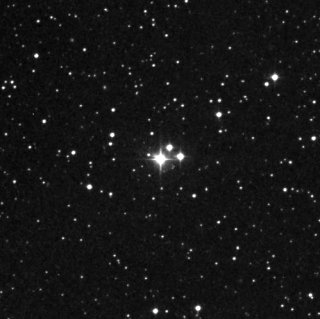 |
SAO 73068,
GSC 3217:1908, HIP 114504, PPM 88605, HD 218917, B+37 4785
Spectral: F5
Constellation: Andromeda
**** Data from Hipparcos Catalog ****
Proper motion (mas/yr): RA = 60.01, Dec = 1.09
Magnitudes Bt: 8.446, Vt: 7.957
Parallax: 6.260 mas, 159.7444 pc
Distance: 521.02 light-years, 32949707.53 astronomical units
Magnitude: 7.90
RA: 23h 11m 25.875s Dec: +38░13'11.321" (Epoch 2000)
**** Observation Log ****
Double listed as Ho 197 in Andromeda. This is a very pretty triple system.
This system resolves as a white large component at 5.71 magnitude, a
small white-blue, then a smaller dark orange.
|
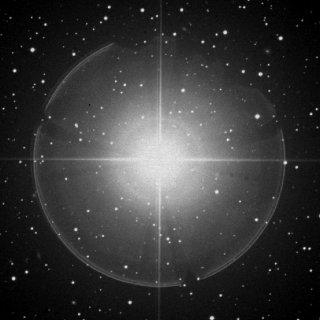 |
Almach, SAO 37734 , GSC 2837:2311, HIP 9640, PPM 44721, HD 12533, B+41 395
Flamsteed-Bayer: 57-Gamma1 Andromedae
Spectral: B8V
Hipparcos Catalog
Proper motion (mas/yr): RA = 43.08, Dec = -50.85
Magnitudes Bt: 4.006, Vt: 2.330
Parallax: 9.190 mas, 108.8139 pc
Distance: 354.90 light-years, 22444525.15 astronomical units
Magnitude: 2.10
RA: 02h 04m 12.380s Dec: +42░21'16.441"
RA: 02h 03m 53.953s Dec: +42░19'47.009" (Epoch 2000)
The third brightest star in Andromeda and one of the most beautiful double stars in the sky. Its Arabic name (also written as
Almach, Almak, Alamak, and Alamaak) has nothing to do with the legend of Andromeda but refers instead to a kind of middle-eastern wild cat. Even a small telescope shows a superb pair separated by 10": the brighter component golden yellow, its partner blue. The second magnitude primary, Gamma1, is a bright giant K star with a surface temperature of about 4,500 K, a luminosity of about 2,000
Lsun, and a radius of 80 Rsun - big enough to swallow the orbit of Venus. Its fainter blue-green companion, Gamma2, is also double, though the dual nature is far more difficult to see. The two fifth-magnitude stars orbit each other with a period of about 60 years and, though they are now near their greatest separation, they are still only 0.5" apart, making them
very touch to split indeed! The brighter of these two is itself a spectroscopic binary with a period of 2.7 days. The three components of Gamma2 are all hot main sequence stars with temperatures around 10,000 K.
**** Observation Log ****
A gorgeous Yellow and light blue pair. One of my all time favorites. The secondary is dimmer, but can
look green. Higher magnification makes it appear strikingly blue . On
exceptionally clear nights, you can
split the smaller blue into two components. So this is actually a triple
star.
|
 Back to top...
Back to top... |
|
| AQUARIUS
(AK-WARE-ee-us) The Water-Pourer. Genitive: Aquarii (AK-WARE-ee-eye).
Abbreviation: Aqr |
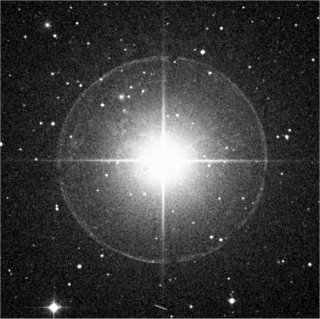 |
55-Zeta 1 Aquarii, SAO 146107,
GSC 5226:1605, HIP 110960, PPM 181465
Spectral: F3III-IV
**** Data from Hipparcos Catalog ****
Proper motion (mas/yr): RA = 191.32, Dec = 37.47
Magnitudes Bt: 4.643, Vt: 4.151
Parallax: 31.530 mas, 31.7158 pc
Distance: 103.44 light-years, 6541870.35 astronomical units
Magnitude: 3.65
RA: 22h 28m 58.993s Dec: -00░00'22.418"
RA: 22h 28m 49.912s Dec: -00░01'11.899" (Epoch 2000)
Azm: 211░51'27" Alt: +46░11'07"
Rise: 02:34 Transit: 08:36 Set: 14:38
Hour angle: 01h 25m 45.2s Air mass: 1.39
Position error: 2.58 mas
**** Observation Log ****
Equal yellow stars.
Extremely close double. Was able to split at
88x and above. At 203x could see both with airy disks. A challenge. |
 Back to top...
Back to top... |
|
| ARIES
(AY-ri-eez) The Golden Ram. Genitive: Arietis (AY-ri-e-tis).
Abbreviation: Ari |
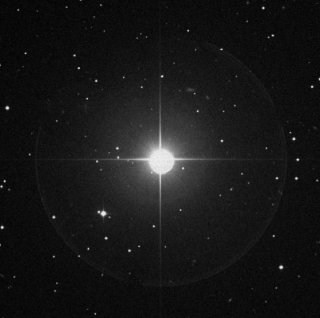 |
Pi Arietis,GSC 1223:1990
HIP 13165
Spectral: B6V
**** Data from Hipparcos Catalog ****
Proper motion (mas/yr): RA = 3.65, Dec = -14.61
Magnitudes Bt: 5.137, Vt: 5.214
Parallax: 5.410 mas, 184.8429 pc
Distance: 602.88 light-years, 38126651.11 astronomical units
Magnitude: 5.26
RA: 02h 49m 27.062s Dec: +17░28'36.581"
RA: 02h 49m 17.560s Dec: +17░27'51.512"
**** Observation Log ****
This is a triple system with close yellow-white components and dim C
component eight times farther away. |
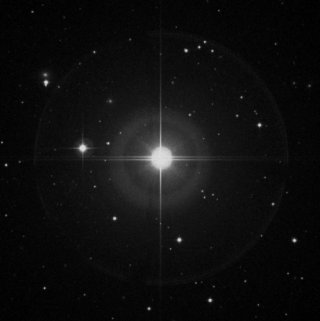 |
Mesarthim, SAO 92680,
GSC 1209:1833, HIP 8832, HD 11502
Flamsteed-Bayer: 5-Gamma1 Arietis
Spec: A0, Spectral: A1p Si
Sep: 7.8"
P.A.: 0║
**** Data from GSC catalog ****
Magnitude: 4.8
RA: 01h 53m 48.3s Dec: +19░19'20"
RA: 01h 53m 31.8s Dec: +19░17'45" (Epoch 2000)
**** Observation Log ****
A gorgeous pair of equally matched blue-white stars.
|
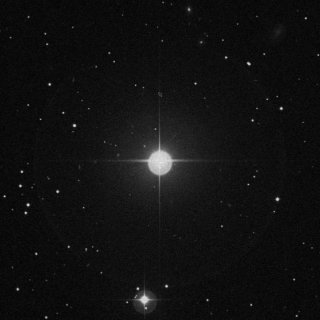 |
1 Arietis, SAO 74966, GSC 1212:1934, HIP 8544, B+21 243
Object type: Double Star
Spectral: G3III
Source catalog: WDS (Washington Double Star Catalog)
WDS ID: STF 174
Separation (first): 2.6
Separation (last): 2.8
Position angle 1: 172
Position angle 2: 165
Spectral: G3III
**** Data from Hipparcos Catalog ****
Proper motion (mas/yr): RA = -14.32, Dec = -7.55
Magnitudes Bt: 6.743, Vt: 5.925
Parallax: 5.680 mas, 176.0563 pc
Distance: 574.22 light-years, 36314292.77 astronomical units
Magnitude: 5.83
RA: 01h 50m 25.155s Dec: +22░18'07.140"
RA: 01h 50m 08.571s Dec: +22░16'31.218" (Epoch 2000)
**** Observation Log ****
Close double of yellow-white and pale blue. Lovely!
|
 |
30 Arietis, SAO 75471, HIP 12189
Magnitude: 6.48
Object type: Double Star
Spectral: F5V F7V
Source catalog: WDS (Washington Double Star Catalog)
WDS ID: STFA 5
Separation (first): 38.6
Separation (last): 38.0
Position angle 1: 273
Position angle 2: 275
Spectral: F5V F7V
Equatorial: RA: 02h 37m 18s Dec: +24░40'16"(current)
Equatorial 2000: RA: 02h 37m 00s Dec: +24░38'50"
**** Observation Log ****
Easy pair of yellow-white stars almost exactly matched. |
 Back to top...
Back to top... |
|
|
BOÍTES (Bo-OH-teez) The Herdsman. Genitive: Bo÷tis
(Bo-OH-tis).
Abbreviation: Bo÷ or Boo |
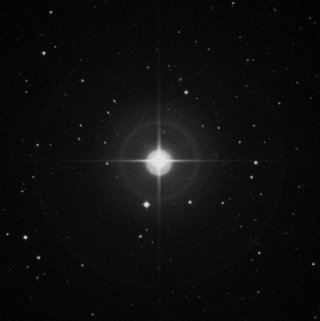 |
SAO 101138
GSC 1477:1336, HIP 71762, PPM 130766, HD 129174, B+17 2768
Flamsteed-Bayer: 29-Pi 1 Bootis
**** Data from GSC catalog ****
Magnitude: 4.9
RA: 14h 40m 53.5s Dec: +16░24'12"
RA: 14h 40m 43.5s Dec: +16░25'05" (Epoch 2000)
******* 5/5/2003, 23:23 *******
I see this pairing a blue-white and white. Their spectra are B9p and A6V.
*******5/13/03
*******
This pair appeared Yellow and pale Orange on this 3/4 moon night. Is that
the third component? A little blue off to the south-east. The Separation
information - Sep AB:6, Sep AC:128 |
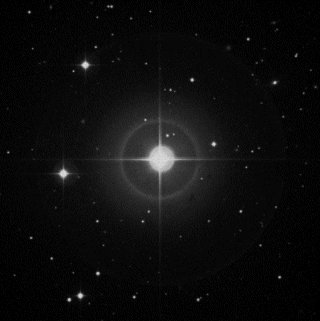 |
SAO 101250
GSC 1481:722, HIP 72659, PPM 130930, HD 131156, B+19 2870
Flamsteed-Bayer: 37-Xi Bootis
Spectral: G8V + K4V
**** Data from Hipparcos Catalog ****
Proper motion (mas/yr): RA = 152.81, Dec = -71.28
Magnitudes Bt: 5.485, Vt: 4.612
Parallax: 149.260 mas, 6.6997 pc
Distance: 21.85 light-years, 1381918.69 astronomical units
Magnitude: 4.54
RA: 14h 51m 33.220s Dec: +19░05'09.064"
RA: 14h 51m 23.379s Dec: +19░06'01.656" (Epoch 2000)
******* 5/5/2003, 23:23 *******
This is a Yellow and Orange pairing to me.
*******5/13/03
*******
This pair is a wonderful Yellow-orange and Orange on this night. Very easy
to split. Separation information - AB:5.6 |
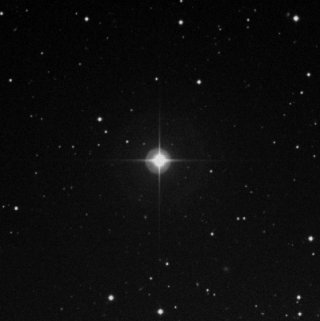 |
SAO 83259
GSC 1475:1155, HIP 69751, PPM 103198, HD 125040, B+20 2954
**** Data from GSC catalog ****
Magnitude: 6.6
RA: 14h 16m 42.6s Dec: +20░06'21"
RA: 14h 16m 32.7s Dec: +20░07'17" (Epoch 2000)
******* 5/5/2003, 23:23 *******
This uneven fairly close less bright pair look white and golden to me.
*******5/13/03
*******
Very pretty double. Tonight I see a very close Yellow and Deep Orange.
Separation information - Sep AB:4 |
 |
Izar
SAO 83500
GSC 2019:1251, HIP 72105, B+27 2417
Flamsteed-Bayer: 36-Epsilon Bootis
Spectral: A0, K0
**** Data from Hipparcos Catalog ****
Proper motion (mas/yr): RA = -50.65, Dec = 20.00
Magnitudes Bt: 3.562, Vt: 2.470
Parallax: 15.550 mas, 64.3087 pc
Distance: 209.75 light-years, 13264641.42 astronomical units
Magnitude: 2.35
RA: 14h 45m 08.707s Dec: +27░03'34.481"
RA: 14h 44m 59.218s Dec: +27░04'27.201" (Epoch 2000)
Azm: 108░35'26" Alt: +63░29'12"
Rise: 17:36 Transit: 01:21 Set: 09:01
Hour angle: -01h 53m 28.9s Air mass: 1.12
Position error: 0.77 mas
******* 5/5/2003, 23:28 *******
Two Close Yellow Stars??? Was not able to split this cleanly. Mostly
churned into a overlapping blob of Orange-yellow and white-yellow. Very
hard to split. As you can see in this STSI DSS photo there are no
discernable diffraction spikes to indicate the pair.
******* 5/9/2003, 22:42 *******
Finally split this pair. Yellow-orange large, and small white-blue to blue-green component. Very close!
A very challenging binary, but a blast! Separation information - AB:2.8 |
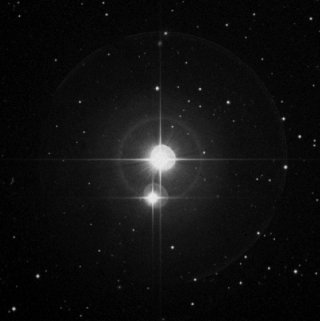 |
Alkalurops
SAO 64686
GSC 2570:1521, HIP 75411, PPM 78563, HD 137391, B+37 2636
Flamsteed-Bayer: 51-Mu 1 Bootis
Spectral: F0V
**** Data from Hipparcos Catalog ****
Proper motion (mas/yr): RA = -147.68, Dec = 84.69
Magnitudes Bt: 4.680, Vt: 4.338
Parallax: 26.960 mas, 37.0920 pc
Distance: 120.98 light-years, 7650785.74 astronomical units
Magnitude: 4.30
RA: 15h 24m 38.053s Dec: +37░21'51.105"
RA: 15h 24m 29.428s Dec: +37░22'37.800" (Epoch 2000)
Azm: 81░44'16" Alt: +61░06'39"
Rise: 17:19 Transit: 02:00 Set: 10:37
Hour angle: -02h 27m 56.5s Air mass: 1.14
Position error: 0.74 mas
******* 5/5/2003, 23:33 *******
Very easy wide pair. White and White-Orange with 2nd as a split??
*******5/13/03
*******
On this night a very easy Yellow and light Orange pair. Separation
information - AB:108 |
 |
SAO 64687
GSC 2570:1518, HIP 75415, PPM 78564, HD 137392, B+37 2637
Flamsteed-Bayer: 51-Mu 2 Bootis
Spectral: G1V
**** Data from Hipparcos Catalog ****
Proper motion (mas/yr): RA = -140.95, Dec = 84.97
Magnitudes Bt: 7.592, Vt: 6.926
Parallax: 26.820 mas, 37.2856 pc
Distance: 121.61 light-years, 7690722.56 astronomical units
Magnitude: 6.51
RA: 15h 24m 39.562s Dec: +37░20'05.518"
RA: 15h 24m 30.866s Dec: +37░20'50.280" (Epoch 2000)
Azm: 93░03'38" Alt: +77░05'34"
Rise: 16:48 Transit: 01:29 Set: 10:06
Hour angle: -01h 05m 11.1s Air mass: 1.03
Position error: 1.15 mas
*******5/13/03
*******
Very cool to split the smaller component into this pair SAO 64687. Very
close pair. Separation information - AB:2 |
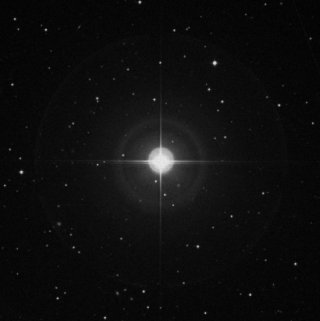 |
SAO 120426
GSC 909:1493, HIP 70327, HD 126129, B+09 2882
**** Data from GSC catalog ****
Magnitude: 4.9
RA: 14h 23m 33.0s Dec: +08░25'51"
RA: 14h 23m 22.7s Dec: +08░26'48" (Epoch 2000)
******* 5/5/2003, 23:23 *******
This uneven fairly close pair looked almost blue-white and greenish to me.
Although they have a spectral class of A0V and F0Vwhich would indicate a
white and yellow pairing.
*******5/13/03*******
Lovely pair. Very close and looked White and very pale Yellow. The
separation is Sep AB:6 |
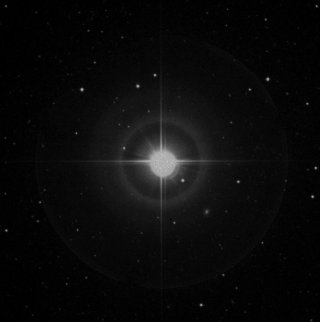 |
SAO 29046
GSC 3471:1250, HIP 69483, PPM 34403, HD 124675, B+52 1782
Flamsteed-Bayer: 17-Kappa 2 Bootis
Spectral: A8IV
**** Data from Hipparcos Catalog ****
Proper motion (mas/yr): RA = 61.39, Dec = -10.57
Magnitudes Bt: 4.765, Vt: 4.539
Parallax: 21.030 mas, 47.5511 pc
Distance: 155.09 light-years, 9808139.32 astronomical units
Magnitude: 4.53
RA: 14h 13m 37.836s Dec: +51░46'33.198"
RA: 14h 13m 29.008s Dec: +51░47'23.874" (Epoch 2000)
Azm: 42░43'57" Alt: +70░29'30"
Always above horizon. Transit: 00:10
Hour angle: -01h 25m 57.5s Air mass: 1.06
Position error: 1.24 mas
**** Observation Log ****
Separation information - Sep AB:14 |
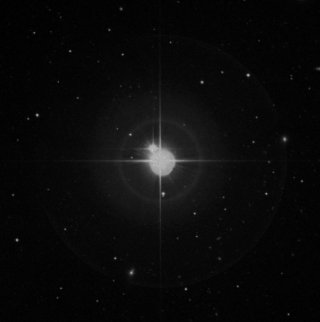 |
SAO 29071
GSC 3478:1333, HIP 69713, PPM 34432, HD 125161, B+52 1784
Flamsteed-Bayer: 21-Iota Bootis
Spectral: A9V
**** Data from Hipparcos Catalog ****
Proper motion (mas/yr): RA = -149.98, Dec = 89.42
Magnitudes Bt: 5.019, Vt: 4.772
Parallax: 33.540 mas, 29.8151 pc
Distance: 97.24 light-years, 6149826.21 astronomical units
Magnitude: 4.75
RA: 14h 16m 18.659s Dec: +51░21'11.819"
RA: 14h 16m 09.929s Dec: +51░22'02.033" (Epoch 2000)
Azm: 41░54'38" Alt: +71░40'56"
Always above horizon. Transit: 00:13
Hour angle: -01h 18m 35.6s Air mass: 1.05
Position error: 0.64 mas
**** Observation Log ****
Separation information - Sep AB:38, Sep AC:86
|
 Back to top...
Back to top... |
|
|
CANCER (KAN-ser) The Crab. Genitive: Cancri
(KAN-kre). Abbreviation: Cnc |
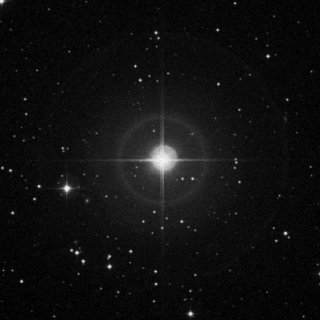 |
SAO 97646, Tegmine
GSC 1381:1641, HIP 40167
Flamsteed-Bayer: 16-Zeta 2 Cancri
Spectral: G0V
Constellation: Cancer
**** Data from Hipparcos Catalog ****
Proper motion (mas/yr): RA = 28.29, Dec = -150.94
Magnitudes Bt: 0.000, Vt: 0.000
Parallax: 39.110 mas, 25.5689 pc
Distance: 83.39 light-years, 5273975.29 astronomical units
Magnitude: 4.67
RA: 08h 12m 12.726s Dec: +17░38'51.974" (Epoch 2000)
**** Observation Log ****
Split this little beauty! All yellow. Larger in the center, flanked by
smaller yellow jewels. |
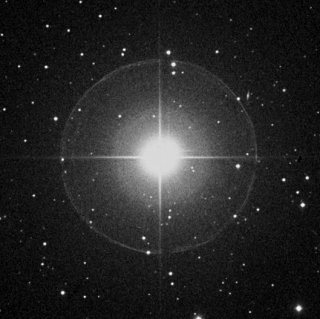 |
SAO 80416
GSC 1949:2011, HIP 43103, PPM 99032, HD 74739, B+29 1824
Flamsteed-Bayer: 48-Iota Cancri
Spectral: G8Iab:
Constellation: Cancer
**** Data from Hipparcos Catalog ****
Proper motion (mas/yr): RA = -20.69, Dec = -43.95
Magnitudes 4.132, 6.6
Sep: 30.5"
PA: 307║
Parallax: 10.940 mas, 91.4077 pc
Distance: 298.13 light-years, 18854221.63 astronomical units
Magnitude: 4.03
RA: 08h 46m 41.821s Dec: +28░45'35.634" (Epoch 2000)
**** Observation Log ****
Lovely double Yellow-orange and green, wow!
1/18/2004-This lovely pair looked yellow and blue tonight. One of the most
striking in the sky! Looks very much like the famous Albireo in Cygnus. |
 Back to top...
Back to top... |
|
|
CANES VENATICI (KAY-neez Ve-NAT-i-sy) The
Hunting Dogs. Genitive: Canum Venaticorum (KAY-num Ve-NAT-i-kor-um). Abbreviation:
CVn |
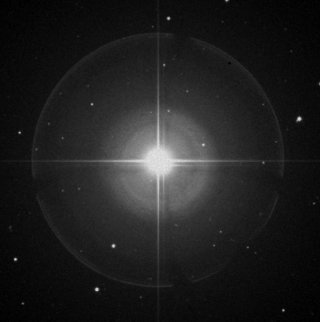 |
Cor Caroli, SAO 63257
GSC 3021:2645, HIP 63125, PPM 76815, HD 112413, B+39 2580
Flamsteed-Bayer: 12-Alpha2 Canum Venaticorum
Spectral: A0spe, and F0V
**** Data from Hipparcos Catalog ****
Proper motion (mas/yr): RA = -233.43, Dec = 54.98
Magnitudes Bt: 2.810, Vt: 2.874
Parallax: 29.600 mas, 33.7838 pc
Distance: 110.19 light-years, 6968418.04 astronomical units
Magnitude: 2.89
RA: 12h 56m 01.667s Dec: +38░19'06.167" (Epoch 2000)
**** Observation Log ****
Lovely close pairing of unequal white and light yellow components. The
primary should be an A0 type emission star. |
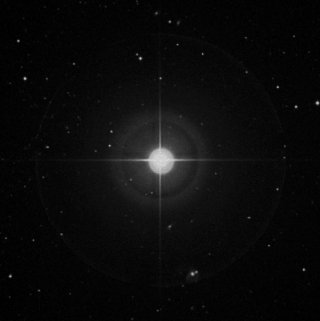 |
SAO 44097
GSC 3017:2100, HIP 59831, PPM 52891, HD 106690, B+41 2284
Flamsteed-Bayer: 2 Canum Venaticorum
Spectral: M1III
**** Data from Hipparcos Catalog ****
Proper motion (mas/yr): RA = 17.08, Dec = -32.06
Magnitudes Bt: 7.734, Vt: 5.856
Parallax: 3.910 mas, 255.7545 pc
Distance: 834.16 light-years, 52753240.96 astronomical units
Magnitude: 5.69
RA: 12h 16m 07.550s Dec: +40░39'36.650" (Epoch 2000)
**** Observation Log ****
Very unequal pair. The much smaller component has a blue-green color to me. The primary has a rich golden yellow color. |
 Back to top...
Back to top... |
|
|
CANIS MAJOR (KAY-nis May-jer) The Big Dog.
Genitive: Canis Majoris (Kay-nis May-JOR-is). Abbreviation: CMa |
 |
Sirius
SAO 151881
GSC 5949:2767, HIP 32349, HD 48915, B-16 1591
Flamsteed-Bayer: 9-Alpha Canis Majoris
Spectral: A0m...
Constellation: Canis Major
**** Data from Hipparcos Catalog ****
Proper motion (mas/yr): RA = -546.01, Dec = -1223.08
Magnitudes Bt: 0.000, Vt: 0.000
Parallax: 379.210 mas, 2.6371 pc
Distance: 8.60 light-years, 543933.92 astronomical units
Magnitude: -1.44
RA: 06h 45m 16.161s Dec: -16░43'20.135"
RA: 06h 45m 08.917s Dec: -16░42'58.017" (Epoch 2000)
**** Observation Log ****
The big dog of the sky! The brightest star in sky. Trying to split the
components of this binary system. It's going to take a great night to do
that. Couldn't split Sirius A and Sirius B (Called the Pup), but this star
low on the horizon is something to behold. What a sight! This APOD shows
both components in an X-ray image. |
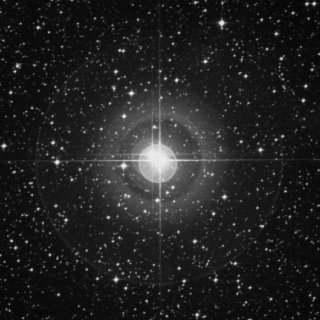 |
SAO 173349, h3945, GSC 6537:3290, HIP 35210, PPM 252026, HD 56577
Spectral: K4III
**** Data from Hipparcos Catalog ****
Proper motion (mas/yr): RA = -4.91, Dec = 3.01
Magnitudes Bt: 7.050, Vt: 5.019
Parallax: 0.520 mas, 1923.0770 pc
Distance: 6272.25 light-years, 396663815.86 astronomical units
Magnitude: 4.83
RA: 07h 16m 50.478s Dec: -23░19'33.283"
RA: 07h 16m 36.834s Dec: -23░18'56.139" (Epoch 2000)
**** Observation Log ****
Gorgeous intense orange and blue pair. One of the most contrasting duo
in the entire sky. This binary, Albireo, and Almach are probably my
favorites. |
 Back to top...
Back to top... |
|
|
CASSIOPEIA (Kass-ee-oh-PEE-ah)
The Queen. Genitive: Cassiopeiae (Kass-ee-oh-PEE-yee). Abbreviation: Cas |
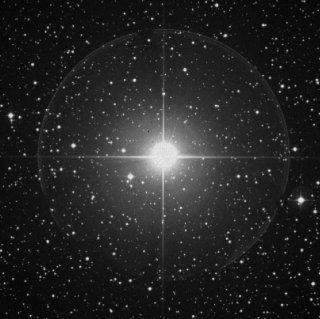 |
SAO 21732
GSC 3663:2669, HIP 3821, PPM 25718, HD 4614
Flamsteed-Bayer: 24-Eta Cassiopeiae
Spectral: G0V SB
**** Data from Hipparcos Catalog ****
Proper motion (mas/yr): RA = 1087.11, Dec = -559.65
Magnitudes Bt: 4.158, Vt: 3.520
Parallax: 167.990 mas, 5.9527 pc
Distance: 19.42 light-years, 1227841.95 astronomical units
Magnitude: 3.46
RA: 00h 49m 14.819s Dec: +57░50'03.405"
RA: 00h 49m 06.291s Dec: +57░48'54.674"
**** Observation Log ****
One of the most striking doubles in the sky. A white-yellow primary with a small
red-orange secondary. Some people see this secondary as almost green in
appearance. Look at the photo real close and you can see
the tiny diffraction spikes off the secondary. The most notable one is at
about 1 O'clock. This secondary star is one of the closest and most easily
seen red dwarfs. |
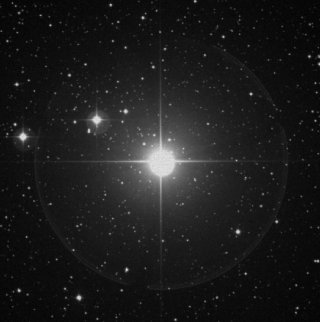 |
Iota Cassiopeia, HIP 11569, HD 15089, B+66 213
Spectral: A5p Sr
Hipparcos Catalog
Proper motion (mas/yr): RA = -27.92, Dec = 37.06
Magnitudes Bt: 4.664, Vt: 4.496
Parallax: 23.040 mas, 43.4028 pc
Distance: 141.56 light-years, 8952481.27 astronomical units
Magnitude: 4.46
RA: 02h 29m 29.283s Dec: +67░25'27.314"
RA: 02h 29m 03.946s Dec: +67░24'08.906" (Epoch 2000)
**** Observation Log ****
|
 Back to top...
Back to top... |
|
|
COMA BERENICES (KO-ma Be-ren-EYE-Seez)
Berenice's Hair. Genitive: Comae Berenices (KO-me Be-ren-EYE-seez), Abbreviation:
Com |
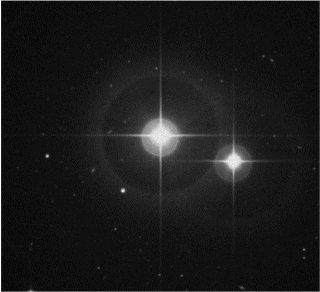 |
Comae Berenices ,SAO 82330
GSC 1989:3206, HIP 60904, PPM 101928, HD 108662, B+26 2354
Flamsteed-Bayer: 17 Comae Berenices
Spectral: A0p
**** Data from Hipparcos Catalog ****
Proper motion (mas/yr): RA = -20.21, Dec = -15.00
Magnitudes Bt: 5.219, Vt: 5.238
Parallax: 12.060 mas, 82.9187 pc
Distance: 270.45 light-years, 17103247.89 astronomical units
Magnitude: 5.29
RA: 12h 28m 54.705s Dec: +25░54'46.266" (Epoch 2000)
**** Observation Log **** |
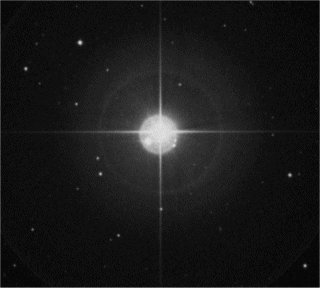 |
SAO 82550
GSC 1455:1412, HIP 62886, PPM 102230, HD 112033, B+22 2519
Flamsteed-Bayer: 35 Comae Berenices
Spectral: G8III
**** Data from Hipparcos Catalog ****
Proper motion (mas/yr): RA = -42.48, Dec = -32.00
Magnitudes Bt: 6.088, Vt: 5.024
Parallax: 10.060 mas, 99.4036 pc
Distance: 324.21 light-years, 20503495.83 astronomical units
Magnitude: 4.88
RA: 12h 53m 27.959s Dec: +21░13'39.318"
RA: 12h 53m 17.744s Dec: +21░14'41.794" (Epoch 2000)
**** Observation Log ****
|
 Back to top...
Back to top... |
|
| CORONA
BOREALIS (Kor-OH-na Bor-ee-AL-is) The Northern Crown. Genitive: Coronae
Borealis (Kor-OH-ne Bor-ee-AL-is). Abbreviation: CrB |
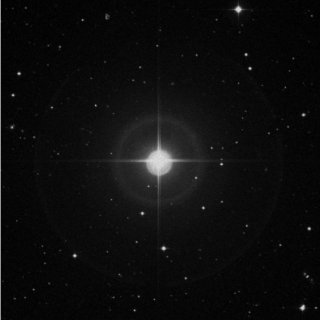 |
SAO 64833
GSC 2577:1753, HIP 76669, HD 139891
Flamsteed-Bayer: 7-Zeta 1 Coronae Borealis
**** Data from GSC catalog ****
Magnitude: 6.0
RA: 15h 39m 30.8s Dec: +36░37'27"
RA: 15h 39m 22.2s Dec: +36░38'12" (Epoch 2000)
Azm: 82░04'22" Alt: +59░00'54"
Rise: 17:39 Transit: 02:15 Set: 10:47
Hour angle: -02h 37m 47.9s Air mass: 1.17
Position error: 200 mas
******* 5/5/2003, 23:38 *******
Pretty close pretty pair. White-blue, Blue-white. The smaller companion is
more blue than the primary.
*******5/13/03*******
Fairly easy pair to split. Yellow-white and Blue-white pair on this night. |
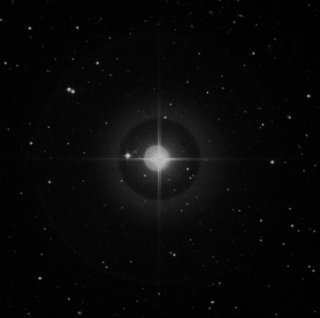 |
SAO 65165
GSC 2583:1846, HIP 79607, B+34 2750
Flamsteed-Bayer: 17-Sigma Coronae Borealis
Spectral: F8V
**** Data from Hipparcos Catalog ****
Proper motion (mas/yr): RA = -266.47, Dec = -86.88
Magnitudes Bt: 5.890, Vt: 5.235
Parallax: 46.110 mas, 21.6873 pc
Distance: 70.73 light-years, 4473328.43 astronomical units
Magnitude: 5.23
RA: 16h 14m 49.236s Dec: +33░50'51.910"
RA: 16h 14m 40.854s Dec: +33░51'31.006" (Epoch 2000)
Azm: 82░24'17" Alt: +51░17'42"
Rise: 18:31 Transit: 02:50 Set: 11:06
Hour angle: -03h 13m 06.4s Air mass: 1.28
Position error: 1.36 mas
******* 5/5/2003, 23:38 *******
Yellow-white, White-blue
*******5/13/03*******
This is a quadruple system. Here is the Separation information - Sep AB:7, Sep AC:86, Sep AD:9.
I can easily split the AB pair of Yellow and Yellow-orange. Maybe able to
see the small blue-white C component and I do not see the D component at
all. This one would be worth investigating. |
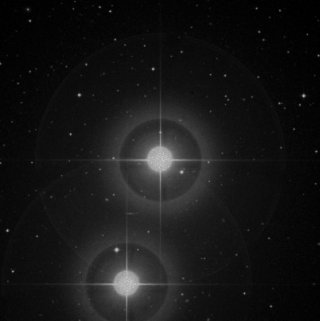 |
SAO 65257
GSC 2583:1993, HIP 80197, PPM 79256, HD 147749, B+34 2773
Flamsteed-Bayer: 20-Nu 1 Coronae Borealis
Spectral: M2III
**** Data from Hipparcos Catalog ****
Proper motion (mas/yr): RA = 5.52, Dec = -38.25
Magnitudes Bt: 7.322, Vt: 5.398
Parallax: 5.870 mas, 170.3578 pc
Distance: 555.63 light-years, 35138872.35 astronomical units
Magnitude: 5.20
RA: 16h 22m 29.824s Dec: +33░47'19.080"
RA: 16h 22m 21.425s Dec: +33░47'56.586" (Epoch 2000)
Azm: 82░09'14" Alt: +50░45'25"
Rise: 18:39 Transit: 02:58 Set: 11:13
Hour angle: -03h 15m 47.6s Air mass: 1.29
Position error: 0.60 mas
******* 5/5/2003, 23:38 *******
Wide, easy split with an Orange-red and Orange pairing to me.
*******5/13/03*******
A lovely sight indeed. Very wide closely matched Orange pair. |
 Back to top...
Back to top... |
|
| CORVIS
(KOR-vus) The Crow. Genitive: Corvi (KOR-vi). Abbreviation: Crv |
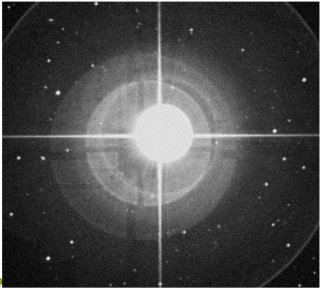 |
Algorab, SAO 157323
GSC 6103:2395, HIP 60965, PPM 225920, HD 108767, B-15 3482
Flamsteed-Bayer: 7-Delta Corvi
Spectral: B9.5V, K
**** Data from Hipparcos Catalog ****
Proper motion (mas/yr): RA = -209.97, Dec = -139.30
Magnitudes Bt: 2.944, Vt: 2.959
Parallax: 37.110 mas, 26.9469 pc
Distance: 87.89 light-years, 5558210.01 astronomical units
Magnitude: 2.94
RA: 12h 29m 51.855s Dec: -16░30'55.557" (Epoch 2000)
**** Observation Log ****
A beautiful B9 Blue-White primary (Algorab A) and easily
resolved, but much smaller K-type secondary, (Algorab B). The secondary
can look orange to purple and is a wonderful contrast to Algorab A. The
system has a 9400 year period. |
 Back to top...
Back to top... |
|
|
CYGNUS (SIG-nus) The Swan. Genitive: Cygni
(SIG-ni). Abbreviation: Cyg |
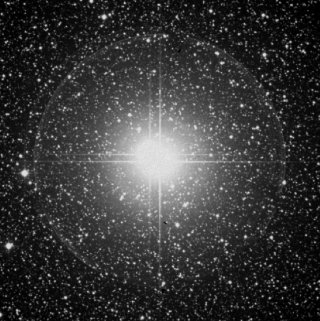 |
Albireo, The Scout Double, SAO 87301
GSC 2133:2964, HIP 95947, PPM 109139, HD 183912, B+27 3410
Flamsteed-Bayer: 6-Beta1 Cygni
Spectral: K3II+...
SAO 87302
GSC 2133:2963, HIP 95951, PPM 109141, HD 183914, B+27 3411
Flamsteed-Bayer: 6-Beta2 Cygni
Spectral: B8V
**** Data from Hipparcos Catalog ****
Proper motion (mas/yr): RA = -7.09, Dec = -5.63
Magnitudes Bt: 4.478, Vt: 3.200
Parallax: 8.460 mas, 118.2033 pc
Distance: 385.53 light-years, 24381226.45 astronomical units
Magnitude: 3.05
RA: 19h 30m 51.271s Dec: +27░58'10.923"
RA: 19h 30m 43.281s Dec: +27░57'34.852" (Epoch 2000)
**** Observation Log ****
Perhaps the most beautiful of all doubles in the entire sky! The contrast
of this Golden-yellow and blue due is astonishing. An absolute gem. |
 |
SAO 31898
GSC 3565:1524, HIP 96895, PPM 37671, HD 186408, B+50 2847
Flamsteed-Bayer: 16 Cygni
Spectral: G2V
Constellation: Cygnus
Double Star
**** Data from Hipparcos Catalog ****
Proper motion (mas/yr): RA = -147.75, Dec = -158.85
Magnitudes Bt: 6.762, Vt: 6.034
Parallax: 46.250 mas, 21.6216 pc
Distance: 70.52 light-years, 4459787.60 astronomical units
Magnitude: 5.99
RA: 19h 41m 53.095s Dec: +50░32'07.239"
RA: 19h 41m 48.953s Dec: +50░31'30.217" (Epoch 2000)
**** Observation Log ****
Beautifully matched twins. Very easy to resolve. Sep: 39.3", PA:
134║, Spec-AB: G2V,G5V. This is in the same FOV
at 56X as NGC 6826, the Blinking Planetary. |
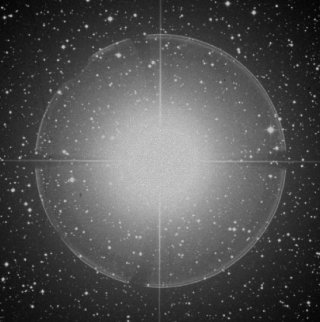 |
SAO 48796, GSC 3557:2486, HIP 97165, PPM 58782, HD 186882, B+44 3234
Flamsteed-Bayer: 18-Delta Cygni
Spectral: B9.5III
**** Data from Hipparcos Catalog ****
Proper motion (mas/yr): RA = 43.22, Dec = 48.44
Magnitudes Bt: 2.875, Vt: 2.898
Parallax: 19.070 mas, 52.4384 pc
Distance: 171.03 light-years, 10816212.90 astronomical units
Magnitude: 2.86
RA: 19h 45m 04.414s Dec: +45░08'34.977"
RA: 19h 44m 58.478s Dec: +45░07'50.915" (Epoch 2000)
**** Observation Log ****
A good test for a small scope.
|
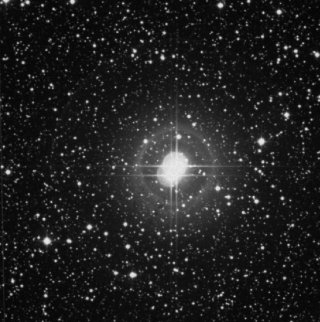 |
SAO 70919, 61 Cygni, GSC 3168:2790
**** Data from GSC catalog ****
Magnitude: 5.2
RA: 21h 07m 02.8s Dec: +38░45'50"
RA: 21h 06m 54.6s Dec: +38░44'45" (Epoch 2000)
Spec: K5, AB: m5.2, 6.1
Sep: 30.3"
PA: 150║
**** Observation Log ****
This is actually a quadruple system. |
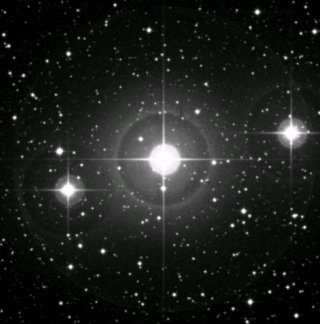 |
SAO 31815
GSC 3564:3157, HIP 96441, PPM 37578, HD 185395, B+49 3062
Flamsteed-Bayer: 13-Theta Cygni
Spectral: F4V
**** Data from Hipparcos Catalog ****
Proper motion (mas/yr): RA = -8.15, Dec = 262.98
Magnitudes Bt: 4.964, Vt: 4.543
Parallax: 53.780 mas, 18.5943 pc
Distance: 60.65 light-years, 3835351.09 astronomical units
Magnitude: 4.49
RA: 19h 36m 30.637s Dec: +50░13'51.950"
RA: 19h 36m 26.535s Dec: +50░13'15.970" (Epoch 2000)
**** Observation Log ****
Very easy double. Quite separated. Larger component has a white-yellow
color, the smaller an orange-yellow color to me. A dim blue star is in the
same FOV, but apparently not part of this system. |
 Back to top...
Back to top... |
|
|
DELPHINUS (Del-FY-nus) The Dolphin.
Genitive: Delphini (Del-FY-ni). Abbreviation: Del |
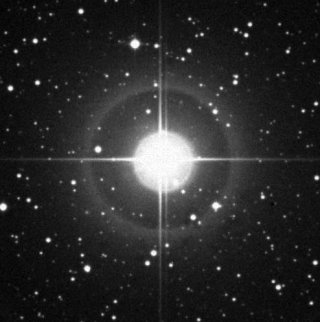 |
SAO 106476, GSC 1634:3056, HIP
102532, PPM 138996, HD 197964, B+15 4255
Double Star
Flamsteed-Bayer: 12-Gamma2 Delphini
Spectral: K1IV
Constellation: Delphinus
**** Data from Hipparcos Catalog ****
Proper motion (mas/yr): RA = -25.88, Dec = -196.27
Magnitudes Bt: 5.594, Vt: 4.378
Parallax: 32.140 mas, 31.1139 pc
Distance: 101.48 light-years, 6417709.41 astronomical units
Magnitude: 4.26
RA: 20h 46m 46.802s Dec: +16░08'09.390"
RA: 20h 46m 39.502s Dec: +16░07'27.466" (Epoch 2000)
**** Observation Log ****
Lovely double. The larger component has a yellow-orange color, the smaller
a white-blue color to me. Was able to split this pair easily at 75x. Used
75x, 100x and 200x for viewing. Color was distinguished at all
magnifications.
Lovely double. The larger component has a yellow-orange color, the smaller
a white-blue color to me. Was able to split this pair easily at 75x. Used
75x, 100x and 200x for viewing. Color was distinguished at all
magnifications. |
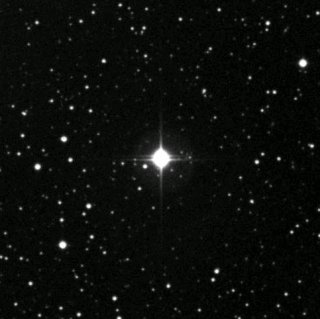 |
SAO 106466 & SAO 106467
GSC 1634:3058, HIP 102490, HD 197913, B+15 4251
Spectral: K0
Constellation: Delphinus
Double Star
**** Data from Hipparcos Catalog ****
Proper motion (mas/yr): RA = 87.38, Dec = 65.31
Magnitudes Bt: 8.035, Vt: 7.143
Parallax: 26.150 mas, 38.2409 pc
Distance: 124.73 light-years, 7887769.78 astronomical units
Magnitude: 7.09
RA: 20h 46m 20.612s Dec: +15░55'08.135"
RA: 20h 46m 13.306s Dec: +15░54'26.334" (Epoch 2000)
**** Observation Log ****
Two very close white-blue components that I could resolve. Larger
component has a slightly yellow tint. Was able to split easily at 88x.
Color difference at 203x. |
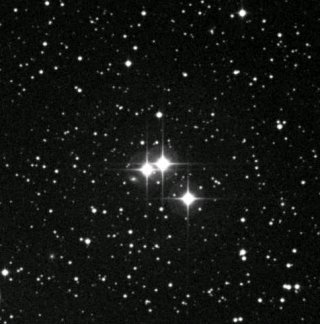 |
SAO 106299 & SAO 106301
& SAO 106302
GSC 1100:51, HIP 101694, PPM 138697, B+14 4362
Spectral: G0
Constellation: Delphinus
**** Data from Hipparcos Catalog ****
Proper motion (mas/yr): RA = -20.72, Dec = -48.33
Magnitudes Bt: 9.515, Vt: 8.789
Parallax: 7.020 mas, 142.4501 pc
Distance: 464.61 light-years, 29382503.88 astronomical units
Magnitude: 8.66
RA: 20h 36m 52.429s Dec: +14░43'37.397"
RA: 20h 36m 45.138s Dec: +14░42'57.431" (Epoch 2000)
**** Observation Log ****
This is a favorite triple of ours. Very close to the star Rotanev, where
the head of Delphinus meets the tail. A pretty triangle of small white
stars. |
 Back to top...
Back to top... |
|
|
DRACO (DRAY-ko) The Dragon. Genitive:
Draconis (DRAY-Ko-nis). Abbreviation: Dra |
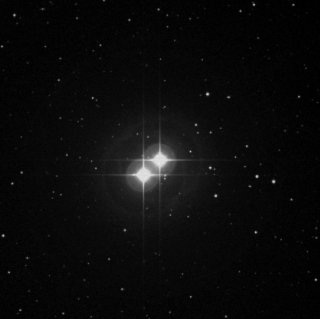 |
SAO 30447
GSC 3892:1620, HIP 85819, PPM 36040, HD 159541, B+55 1944
Flamsteed-Bayer: 24-Nu1 Draconis
Spectral: Am...
**** Data from Hipparcos Catalog ****
Proper motion (mas/yr): RA = 148.53, Dec = 54.24
Magnitudes Bt: 5.187, Vt: 4.913
Parallax: 32.960 mas, 30.3398 pc
Distance: 98.96 light-years, 6258045.58 astronomical units
Magnitude: 4.88
RA: 17h 32m 16.687s Dec: +55░10'49.483"
RA: 17h 32m 10.570s Dec: +55░11'03.273" (Epoch 2000)
**** Observation Log ****
|
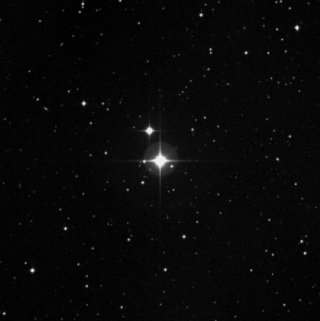 |
SAO 30949
GSC 3916:1982, HIP 90156, PPM 36589, HD 170073, B+58 1809
Flamsteed-Bayer: 39 Draconis
Spectral: A3V
**** Data from Hipparcos Catalog ****
Proper motion (mas/yr): RA = -37.64, Dec = 62.08
Magnitudes Bt: 5.117, Vt: 5.041
Parallax: 17.310 mas, 57.7701 pc
Distance: 188.42 light-years, 11915955.12 astronomical units
Magnitude: 4.98
RA: 18h 23m 59.781s Dec: +58░47'59.269"
RA: 18h 23m 54.607s Dec: +58░48'02.650" (Epoch 2000)
**** Observation Log ****
|
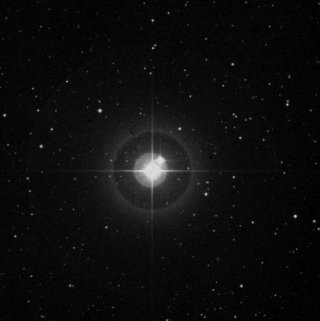 |
SAO 31214, Omicron Draconis
GSC 3930:1790, HIP 92512, PPM 36888, HD 175306, B+59 1925
Spectral: K0II-III SB
**** Data from Hipparcos Catalog ****
Proper motion (mas/yr): RA = 77.56, Dec = 25.43
Magnitudes Bt: 6.143, Vt: 4.766
Parallax: 10.120 mas, 98.8142 pc
Distance: 322.29 light-years, 20381934.69 astronomical units
Magnitude: 4.63
RA: 18h 51m 17.173s Dec: +59░23'20.076"
RA: 18h 51m 12.095s Dec: +59░23'18.063" (Epoch 2000)
**** Observation Log ****
|
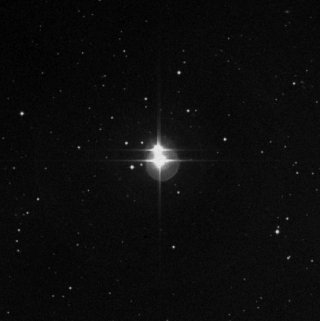 |
SAO 8890
GSC 4436:1425, HIP 86614, PPM 9604, HD 162003, B+72 804
Flamsteed-Bayer: 31-Psi1 Draconis
Spectral: F5IV-V
**** Data from Hipparcos Catalog ****
Proper motion (mas/yr): RA = 26.60, Dec = -269.77
Magnitudes Bt: 5.073, Vt: 4.613
Parallax: 45.380 mas, 22.0361 pc
Distance: 71.87 light-years, 4545288.05 astronomical units
Magnitude: 4.57
RA: 17h 41m 57.469s Dec: +72░08'43.018"
RA: 17h 41m 56.358s Dec: +72░08'55.836" (Epoch 2000)
**** Observation Log ****
|
 Back to top...
Back to top... |
|
| GEMINI
(JEM-in-eye) The Twins. Genitive: Geminorum (JEM-i-nor-um). Abbreviation:
Gem |
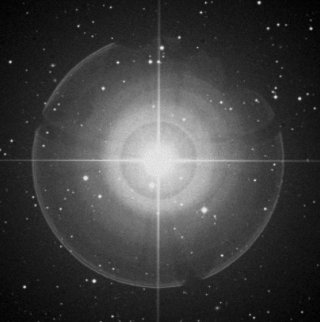 |
Castor, SAO 60198
GSC 2457:2407, HIP 36850, PPM 72938, B+32 1581
Flamsteed-Bayer: 66-Alpha Geminorum
Spectral: A2Vm
Constellation: Gemini
**** Data from Hipparcos Catalog ****
Proper motion (mas/yr): RA = -206.33, Dec = -148.18
Magnitudes Bt: 0.000, Vt: 0.000
Parallax: 63.270 mas, 15.8053 pc
Distance: 51.55 light-years, 3260078.63 astronomical units
Magnitude: 1.58
RA: 07h 34m 48.162s Dec: +31░52'56.461"
RA: 07h 34m 35.863s Dec: +31░53'17.795"(Epoch 2000)
**** Observation Log ****
Castor is actually a triple! What a lovely system. The two larger are very
close together and would be hard to split with a small scope. The C
component is a small |
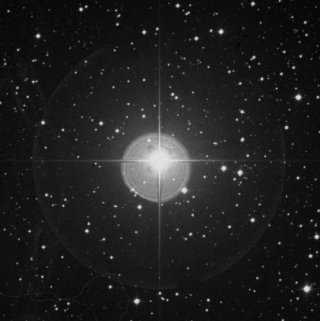 |
Propus, SAO 78135,
GSC 1877:1716, HIP 29655, PPM 95649, HD 42995, B+22 1241
Flamsteed-Bayer: 7-Eta Geminorum
Spectral: M3III
**** Data from Hipparcos Catalog ****
Proper motion (mas/yr): RA = -62.53, Dec = -10.24
Magnitudes Bt: 5.358, Vt: 3.485
Parallax: 9.340 mas, 107.0664 pc
Distance: 349.20 light-years, 22084065.66 astronomical units
Magnitude: 3.31
RA: 06h 15m 04.026s Dec: +22░30'23.885"
RA: 06h 14m 52.657s Dec: +22░30'24.476"
**** Observation Log ****
A wonderful double with a very red giant primary and smaller secondary. The
diffraction spikes are very prevalent in the picture above. IC 443 is the
whispy nebula to the left. |
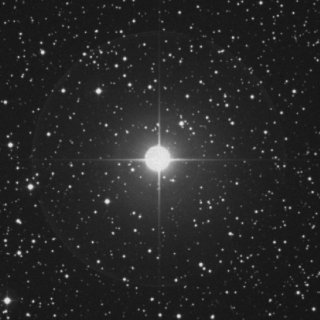 |
SAO 96265
GSC 760:2586, HIP 33202, PPM 123242, HD 50635, B+13 1462
Flamsteed-Bayer: 38 Geminorum
Spectral: F0Vp
**** Data from Hipparcos Catalog ****
Proper motion (mas/yr): RA = 70.19, Dec = -77.79
Magnitudes 4.735:7.7
Sep: 7.1"
P.A.: 145║
Parallax: 35.790 mas, 27.9408 pc
Distance: 91.13 light-years, 5763206.80 astronomical units
Magnitude: 4.73
RA: 06h 54m 52.983s Dec: +13░10'24.571"
RA: 06h 54m 38.636s Dec: +13░10'40.178" (Epoch 2000)
**** Observation Log ****
A very nice unequal Yellow and pale Blue stars. |
 Back to top...
Back to top... |
|
| HERCULES
(HER-cue-leez) The Strongman. Genitive: Herculis (HER-cue-lis).
Abbreviation: Her |
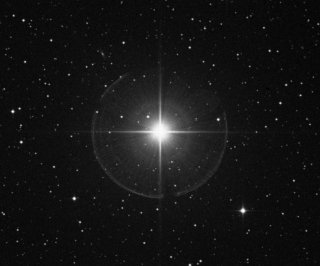 |
Rasalgethi
SAO 102680
GSC 990:2133, HIP 84345, HD 156014, B+14 3207
Flamsteed-Bayer: 64-Alpha1 Herculis
Magnitude: 3.5
SAO 102681
GSC 990:2134, HIP 84345, HD 156015
Flamsteed-Bayer: 64-Alpha2 Herculis
Spectral: M5IIvar
Magnitudes Bt: 4.710, Vt: 3.335
RA: 17h 14m 38.858s Dec: +14░23'25.198" (Epoch 2000)
******* 5/14/2003 04:45:00*******
Pretty Orange pair. Very nice and easy to
find. |
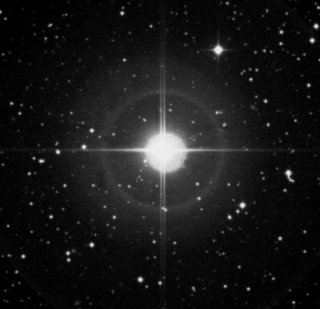 |
SAO 85648
GSC 1566:3674, HIP 88267, PPM 106664, HD 164669, B+21 3280
Flamsteed-Bayer: 95 Herculis
**** Data from GSC catalog ****
Magnitude: 5.1
RA: 18h 01m 39.1s Dec: +21░35'31"
RA: 18h 01m 30.2s Dec: +21░35'44" (Epoch 2000)
Azm: 93░30'26" Alt: +39░48'56"
Rise: 20:44 Transit: 04:05 Set: 11:23
Hour angle: -03h 42m 10.7s Air mass: 1.56
Position error: 100 mas
******* 5/14/2003 04:45:00*******
Very pretty double. Even Orange and Yellow. Highly recommended! |
 Back to top...
Back to top... |
|
|
HYDRA (HIGH-dra) The Female Water Snake.
Genitive: Hydrae (HIGH-dree). Abbreviation: Hya |
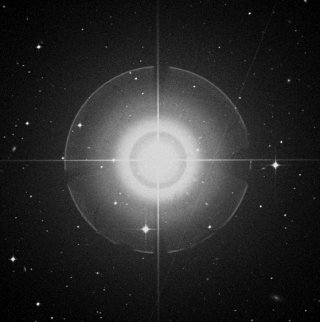 |
Alphard, SAO 136871
GSC 5460:1592, HIP 46390, PPM 192393, HD 81797, B-08 2680
Flamsteed-Bayer: 30-Alpha Hydrae
Spectral: K3III
**** Data from Hipparcos Catalog ****
Proper motion (mas/yr): RA = -14.49, Dec = 33.25
Magnitudes Bt: 3.904, Vt: 2.161
Parallax: 18.400 mas, 54.3478 pc
Distance: 177.26 light-years, 11210064.18 astronomical units
Magnitude: 1.99
RA: 09h 27m 35.243s Dec: -08░39'30.969" (Epoch 2000)
**** Observation Log ****
Hydra's brightest
star. Thus it's designation of alpha Hydra. A wonderful golden duo.
Easy to split and bright golden-yellow, or bright golden-orange. |
 Back to top...
Back to top... |
|
| LACERTA
(La-SIR-ta) The Lizard. Genitive: Lacertae (La-SIR-tee). Abbreviation: Lac |
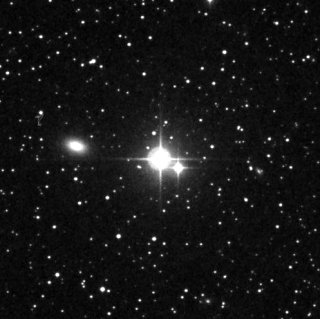 |
SAO 72851
GSC 2761:640, HIP 113222, PPM 88347, HD 216831, B+35 4917
Spectral: B7III
Constellation: Lacerta
**** Data from Hipparcos Catalog ****
Proper motion (mas/yr): RA = 19.89, Dec = -1.54
Magnitudes Bt: 5.662, Vt: 5.723
Parallax: 3.900 mas, 256.4103 pc
Distance: 836.30 light-years, 52888505.55 astronomical units
Magnitude: 5.73
RA: 22h 55m 44.508s Dec: +36░21'05.004" (Epoch 2000)
**** Observation Log ****
Double in Lacerta. Listed as H975. This beautiful double resolves as a
larger blue 5.71 magnitude and a smaller distinct orange component about
1/2 the size of the main component. There is a small Elliptical Galaxy by
this double designated NGC 7426 which we'll try to to resolve the next
time we visit this double. |
 Back to top...
Back to top... |
|
|
LEO (LEE-oh) The Lion. Genitive: Leonis
(LEE-oh-nis), Abbreviation: Leo |
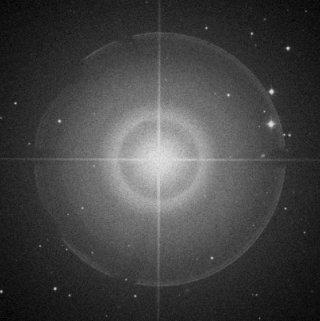 |
Algieba, SAO 81298
GSC 1423:1349, HIP 50583, PPM 127320, HD 89484, B+20 2467
Flamsteed-Bayer: 41-Gamma 1 Leonis
Spectral: K0III
**** Data from Hipparcos Catalog ****
Proper motion (mas/yr): RA = 310.77, Dec = -152.88
Magnitudes Bt: 3.792, Vt: 2.366
Parallax: 25.960 mas, 38.5208 pc
Distance: 125.64 light-years, 7945500.15 astronomical units
Magnitude: 2.00
RA: 10h 19m 58.354s Dec: +19░50'29.359" (Epoch 2000)
**** Observation Log ****
One of the most lovely doubles around. Gamma Leo. Bight golden pair. Wow! |
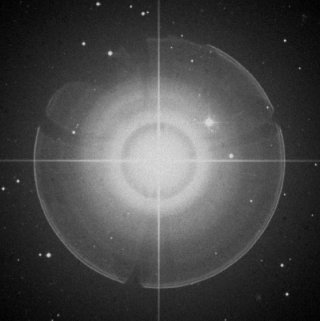 |
Regulus, SAO 98967
GSC 833:1381, HIP 49669, PPM 127140, HD 87901, B+12 2149
Flamsteed-Bayer: 32-Alpha Leonis
Spectral: B7V
**** Data from Hipparcos Catalog ****
Proper motion (mas/yr): RA = -249.40, Dec = 4.91
Magnitudes Bt: 1.360, Vt: 1.399
Parallax: 42.090 mas, 23.7586 pc
Distance: 77.49 light-years, 4900574.39 astronomical units
Magnitude: 1.36
RA: 10h 08m 22.311s Dec: +11░58'01.945" (Epoch 2000)
**** Observation Log ****
Lovely young blue-white main sequence star. I can't split this baby
though... |
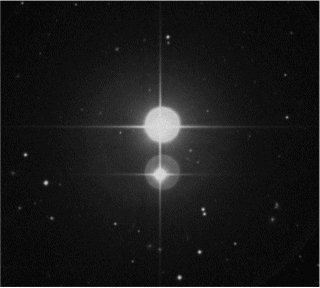 |
Tau Leonis, SAO 118875
GSC 267:1193, HIP 55945, PPM 157884, HD 99648, B+03 2504
Flamsteed-Bayer: 84-Tau Leonis
Spectral: G8II-III
**** Data from Hipparcos Catalog ****
Proper motion (mas/yr): RA = 17.32, Dec = -10.41
Magnitudes Bt: 6.226, Vt: 5.055
Parallax: 5.250 mas, 190.4762 pc
Distance: 621.25 light-years, 39288605.08 astronomical units
Magnitude: 4.95
RA: 11h 27m 56.240s Dec: +02░51'22.555" (Epoch 2000)
**** Observation Log ****
Beautiful pair. Orange-yellow primary and White-blue secondary. In the same
low-power field as 83 Leonis, which is a wide Orange to Orange-yellow pair. |
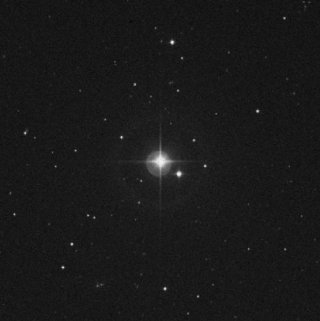 |
SAO 99673, GSC 1438:2839, HIP 56473, HD 100600, B+17 2374
Flamsteed-Bayer: 90 Leonis
**** Data from GSC catalog ****
Magnitude: 6.1
RA: 11h 34m 56.3s Dec: +16░46'25"
RA: 11h 34m 42.5s Dec: +16░47'48" (Epoch 2000)
**** Observation Log ****
Triple system. in the tail section of Leo. The primary and secondary
are Blue and White respectively and are quite close. The tertiary is 63"
away in PA 235 and Blue-white too. |
 Back to top...
Back to top... |
|
| LYNX
(Links) The Lynx or Bobcat. Genitive: Lyncis (LIN-sis). Abbreviation: Lyn |
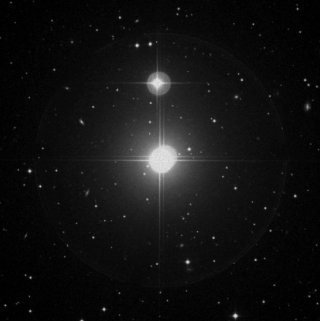 |
SAO 26312
GSC 3785:1697, HIP 35785, PPM 31091, HD 57103, B+55 1192
Flamsteed-Bayer: 19 Lynx
Spectral: B8V
**** Data from Hipparcos Catalog ****
Proper motion (mas/yr): RA = -11.23, Dec = -32.04
Magnitudes 5.762, 6.5
Sep: 14.8"
PA:315║
Spec: B8, A
Parallax: 6.960 mas, 143.6782 pc
Distance: 468.62 light-years, 29635801.08 astronomical units
Magnitude: 5.80
RA: 07h 23m 13.302s Dec: +55░16'30.664"
RA: 07h 22m 52.051s Dec: +55░16'53.010" (Epoch 2000)
**** Observation Log ****
1/18/2004-Lovely White primary and White-Blue secondary. Quite separated
and easy to split. However, I understand that this is a quadruple system
and all components can be spit with a large telescope... |
 Back to top...
Back to top... |
|
|
LYRA (LIE-ra) The Lyre.
Genitive: Lyrae (LIE-re). Abbreviation: Lyr
|
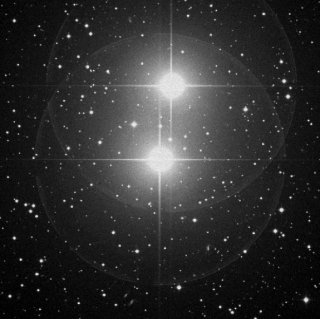 |
Epsilon Lyrae, Double-Double, SAO 67315,
GSC 3122:3439, HIP 91926, B+39 3510
Flamsteed-Bayer: 5-Epsilon2 Lyrae
Spectral: A8Vn
**** Data from Hipparcos Catalog ****
Proper motion (mas/yr): RA = 5.83, Dec = 51.83
Magnitudes Bt: 4.782, Vt: 4.561
Parallax: 20.340 mas, 49.1642 pc
Distance: 160.35 light-years, 10140864.07 astronomical units
Magnitude: 4.59
RA: 18h 44m 30.907s Dec: +39░37'01.895"
RA: 18h 44m 22.780s Dec: +39░36'45.798" (Epoch 2000)
**** Observation Log ****
The famous Double-Double. One of the most beautiful doubles in the sky
that each component is itself a double. Sharp vision and a clear night are
needed to resolve all four, but it's a breath-taking sight to behold!
Separation is AB: 2.6"; P.A. 375░. CD:
2.3"; P.A. 94░ |
 Back to top...
Back to top... |
|
|
MONOCEROS (Mo-NOS-er-os)
The Unicorn. Genitive: Monocerotis (Mo-NOS-eroo-tis). Abbreviation: Mon |
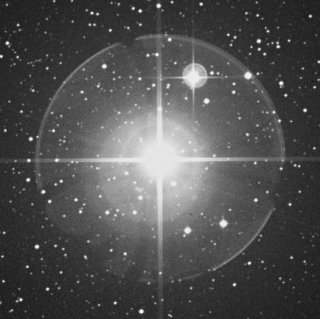 |
SAO 133316, GSC 4797:1880, HIP 30867
Flamsteed-Bayer: 11-Beta Monocerotis
**** Data from GSC catalog ****
Magnitudes: 4.7, 5.2, 6.1
Sep: AB:7.3', BC:2.8"
PA: AB:132║, BC:106║
RA: 06h 29m 01.4s Dec: -07░02'07"
RA: 06h 28m 48.9s Dec: -07░01'58" (Epoch 2000)
******* Observer Log *******
Is a very unusual triple star in Monoceros of almost equal brilliant
white to white-blue stars forming an acute triangle. Two are very close
and a nice test for the quality of a telescope and seeing conditions. The
third component is easily separated |
 Back to top...
Back to top... |
|
|
SCORPIUS (SCORE-pee-us) The Scorpion.
Genitive: Scorpii (SCORE-pee-eye). Abbreviation: Sco |
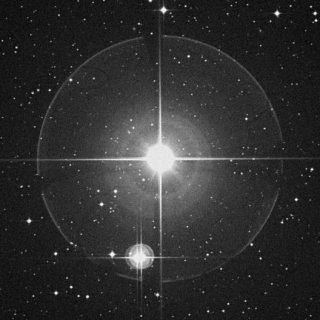 |
SAO 159665, GSC 5619:1257, PPM 231150, HD 144069, B-10 4237
Flamsteed-Bayer: Xi Scorpii
Spectral:
**** Data from Tycho Catalog ****
Proper motion (mas/yr): RA = -67.80, Dec = -12.80
Magnitudes Bt: 4.760, Vt: 4.276
Parallax: 34.100 mas, 29.3255 pc
Distance: 95.65 light-years, 6048832.43 astronomical units
Magnitude: 4.23
RA: 16h 04m 33.80s Dec: -11░22'58.83"
RA: 16h 04m 22.14s Dec: -11░22'22.99" (Epoch 2000)
**** Observation Log ****
The AC components are a yellow and bluish pairing with a Separation
8"and P. A. of 51░, The AB are a challenging yellow and orange with
a Separation 0.8" and P. A. of 61░. Couldn't split the AB pair with
an 11" SCT, but were able to with a 16" SCT. In the same FOV as
nice double, Struve 1999, to the lower left in this image. |
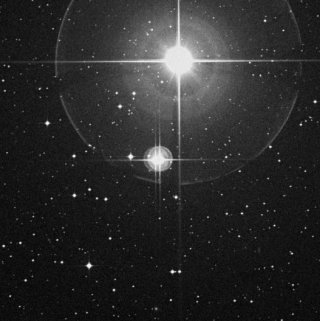 |
SAO 159668, GSC 5619:1260, HIP 78738, PPM 231153, HD 144087, B-11 4057,
Struve 1999
Spectral: G8V comp
**** Data from Hipparcos Catalog ****
Proper motion (mas/yr): RA = -69.17, Dec = -20.93
Magnitudes Bt: 8.342, Vt: 7.508
Parallax: 35.250 mas, 28.3688 pc
Distance: 92.53 light-years, 5851494.37 astronomical units
Magnitude: 7.44
RA: 16h 04m 37.591s Dec: -11░27'33.642"
RA: 16h 04m 25.922s Dec: -11░26'57.770" (Epoch 2000)
**** Observation Log ****
A nice easily little binary of yellow components
with a Separation of 11.6" at P. A. of 99░.
|
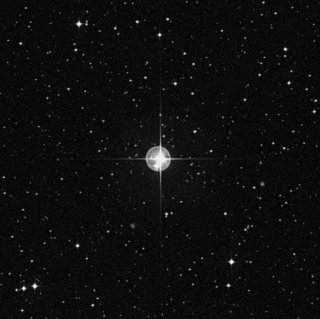 |
SAO 159803
GSC 5617:1373, HIP 79588, PPM 231404, HD 145996, B-10 4276
Spectral: F8
**** Data from Hipparcos Catalog ****
Proper motion (mas/yr): RA = 69.67, Dec = -17.72
Magnitudes Bt: 7.879, Vt: 7.357
Parallax: 12.200 mas, 81.9672 pc
Distance: 267.34 light-years, 16906981.96 astronomical units
Magnitude: 7.28
RA: 16h 14m 28.257s Dec: -10░25'25.285"
RA: 16h 14m 16.568s Dec: -10░24'52.188" (Epoch 2000)
**** Observation Log ****
An unequal pair of a yellow primary and white secondary components.
Because the secondary is much dimmer, it look much darker in color. In
fact can look orange visually. Separation 22" and P.A 156░. |
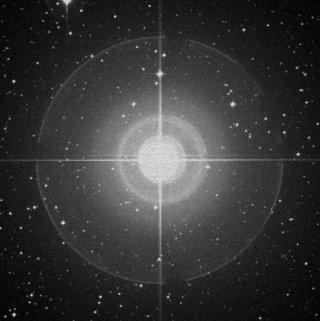 |
Graffias, Acrab ,SAO 159682
GSC 6208:1623, HIP 78820, PPM 231174, HD 144217, P-19 5945
Flamsteed-Bayer: 8-Beta1 Scorpii
Spectral: B0.5V
&
SAO 159683
GSC 6208:1622, HIP 78821, PPM 231175, HD 144218, B-19 4308
Flamsteed-Bayer: 8-Beta2 Scorpii
Spectral: B2V
**** Data from Hipparcos Catalog ****
Proper motion (mas/yr): RA = -6.75, Dec = -24.89
Magnitudes Bt: 2.528, Vt: 2.608, 4.9
Parallax: 6.150 mas, 162.6016 pc
Distance: 530.34 light-years, 33539052.60 astronomical units
Magnitude: 2.56
RA: 16h 05m 38.540s Dec: -19░48'57.366"
RA: 16h 05m 26.231s Dec: -19░48'19.632" (Epoch 2000)
**** Observation Log ****
A very evenly color matched white and white to pale blue pair. The primary
a little brighter. A comfortable Separation 13.6" and P.A. of 21░. |
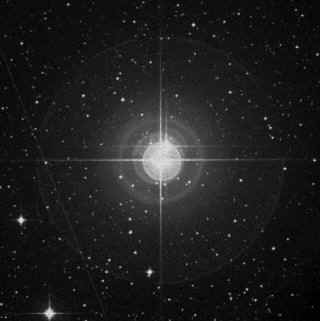 |
SAO 159764, GSC 6209:1537, HIP 79374, PPM 231336, HD 145502, B-19 4333
Flamsteed-Bayer: 14-Nu Scorpii
Spectral: B2IV
**** Data from Hipparcos Catalog ****
Proper motion (mas/yr): RA = -9.70, Dec = -25.25
Magnitudes Bt: 4.109, Vt: 4.127. AB: 4.3, 6.8 CD: 6.4, 7.8
Parallax: 7.470 mas, 133.8688 pc
Distance: 436.62 light-years, 27612474.23 astronomical units
Magnitude: 4.00
RA: 16h 12m 12.068s Dec: -19░28'14.473"
RA: 16h 11m 59.735s Dec: -19░27'38.550" (Epoch 2000)
**** Observation Log ****
Nu Scorpii is a wonderful Double-Double with AB and CD components.
The AB pair is quite a challenge to split at a separation of 0.9" at
P.A. of 03░, than the CD pair with a separation of 2.3" at P.A. of
51░. We were able to split the AB pair with a 16" SCT. All
components have a white to white-yellow color to us. |
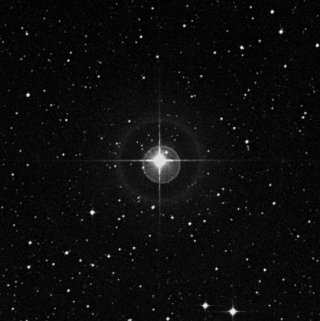 |
SAO 159715 , GSC 5620:1384, HIP 79005, PPM 231240, HD 144708
Flamsteed-Bayer: 11 Scorpii
Spectral: B9V
**** Data from Hipparcos Catalog ****
Proper motion (mas/yr): RA = -41.67, Dec = -27.64
Magnitudes Bt: 5.764, Vt: 5.758 AB: 5.6, 9.9
Parallax: 7.660 mas, 130.5483 pc
Distance: 425.79 light-years, 26927569.29 astronomical units
Magnitude: 5.75
RA: 16h 07m 48.204s Dec: -12░45'18.890"
RA: 16h 07m 36.416s Dec: -12░44'43.477" (Epoch 2000)
**** Observation Log ****
A challenging double and we had to use a 16" SCT to split primarily
because of light pollution. Because of the light pollution, this double
had an orange look to it although they should be white components. The
separation is 3" and a P.A. of 257░. |
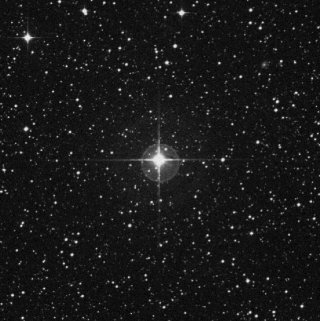 |
12 Sco, GSC 6805:1907, HIP 79399, PPM 265252, HD 145483, P-28 5298
Spectral: B9V
**** Data from Hipparcos Catalog ****
Proper motion (mas/yr): RA = -22.99, Dec = -40.90
Magnitudes Bt: 5.735, Vt: 5.776
Parallax: 10.940 mas, 91.4077 pc
Distance: 298.13 light-years, 18854221.63 astronomical units
Magnitude: 5.67
RA: 16h 12m 29.146s Dec: -28░25'40.348"
RA: 16h 12m 16.040s Dec: -28░25'02.298" (Epoch 2000)
**** Observation Log ****
A white to bluish pair. Separation of 4" and P.A. of 73░. Was fairly
easy to split. |
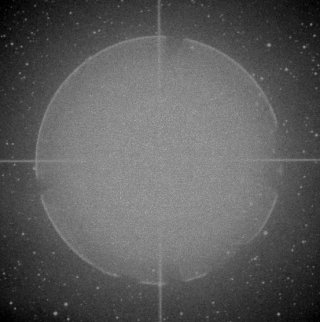 |
Antares, SAO 184415,
GSC 6803:2158, HIP 80763, PPM 265579, HD 148478, P-26 5648
Flamsteed-Bayer: 21-Alpha Scorpii
Spectral: M1Ib + B2.5V
**** Data from Hipparcos Catalog ****
Proper motion (mas/yr): RA = -10.16, Dec = -23.21
Magnitudes Bt: 3.494, Vt: 1.287. AB: 1.2, 5.4
Parallax: 5.400 mas, 185.1852 pc
Distance: 603.99 light-years, 38197254.27 astronomical units
Magnitude: 1.06
RA: 16h 29m 37.539s Dec: -26░26'27.948"
RA: 16h 29m 24.461s Dec: -26░25'55.209" (Epoch 2000)
**** Observation Log ****
A very challenging pair to split because the great Antares Red Super-giant
is so bright! But we split this cool pair with a 16" SCT on a very
dry, steady night. The secondary can look emerald because of the contrast
with Antares, but it was just barely on the green side in the 16" SCT.
This pair has a separation of only 3" and a P.A. of 275░. A
remarkable pair to hunt down. This is really one of the most challenging
binary systems to see and can count ourselves lucky to catch a glimpse of
the elusive "Emerald Flash"! |
 Back to top...
Back to top... |
|
|
URSA MAJOR (ER-sa MAY-jer) The Great Bear.
Genitive: Ursae Majoris (ER-see May-JOR-is). Abbreviation: UMa |
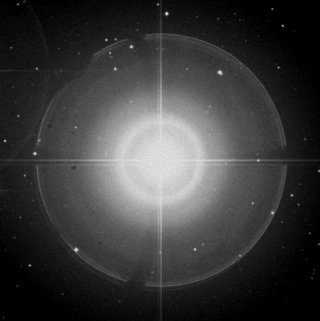 |
Mizar
SAO 28737
GSC 3850:1385, HIP 65378, PPM 34007, HD 116656, B+55 1598
Flamsteed-Bayer: 79-Zeta Ursae Majoris
**** Data from GSC catalog ****
Magnitude: 2.1
RA: 13h 24m 05.1s Dec: +54░54'37"
RA: 13h 23m 55.5s Dec: +54░55'31" (Epoch 2000)
Azm: 46░44'11" Alt: +57░30'04"
Always above horizon. Transit: 23:32
Hour angle: -02h 51m 34.7s Air mass: 1.19
Position error: 100 mas
****5/14/2003 03:15:00****
A very easy and pretty Blue-white Double to view. |
 Back to top...
Back to top... |
|
|
URSA MINOR (ER-sa My-ner) The Little Bear. Genitive:
Ursae Minoris (ER-see MY-nor-is). Abbreviation: UMi |
 |
Polaris, The North Star, SAO 308
GSC 4628:237, HIP 11767, PPM 431, HD 8890, B+88 8
Flamsteed-Bayer: 1-Alpha Ursae Minoris
Spectral: F7:Ib-IIv SB
**** Data from Hipparcos Catalog ****
Proper motion (mas/yr): RA = 44.22, Dec = -11.74
Magnitudes Bt: 2.756, Vt: 2.067
Parallax: 7.560 mas, 132.2751 pc
Distance: 431.42 light-years, 27283753.74 astronomical units
Magnitude: 1.97
RA: 02h 35m 55.245s Dec: +89░17'13.492"
RA: 02h 31m 49.084s Dec: +89░15'50.794" (Epoch 2000)
**** Observation Log ****
Polaris is a lovely yellow star with a fine deep yellow companion. One of the most important stars in the sky because of it's
proximity to the North Celestial Pole less that 1/2 a degree away. Polaris
is also a type of Cepheid Variable star called a W Virginis Cepheid
or Type II Cepheid Variable. |
 Back to top...
Back to top... |
|
|
VIRGO (VER-go) The Virgin. Genitive: Virginis
(VER-gin-is). Abbreviation: Vir |
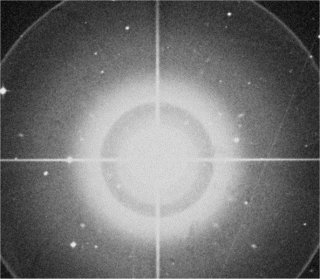 |
Common Name: Porrima, SAO 138917,
Double Star
Magnitude: 2.9
Flamsteed-Bayer: 29-Gamma Virginis
RA, Dec: 12h 41m 46.6s , 1d 27m 41s S
Az, Alt: 193d 7m 44s , 48d 18m 41s N
Rise:15h 46m Transit:21h 43m Set: 3h 44m
Source Catalog GSC
RA, Dec: 12h 41m 39.5s , 1d 26m 56s S (E2000)
**** Observation Log ****
04/172004 - Porimma is a difficult double to resolve and usually looks
more like an oblong yellow star than split. |
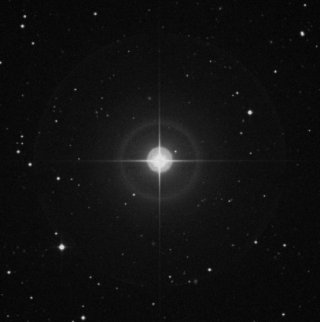 |
SAO 120082, GSC 311:1612, HIP 66936, PPM 159997, HD 119425, B+04 2775
Flamsteed-Bayer: 84 Virginis
Spectral: K1III
**** Data from Hipparcos Catalog ****
Proper motion (mas/yr): RA = -294.22, Dec = -72.88
Magnitudes Bt: 6.919, Vt: 5.542
Parallax: 15.010 mas, 66.6223 pc
Distance: 217.29 light-years, 13741850.34 astronomical units
Magnitude: 5.35
RA: 13h 43m 17.272s Dec: +03░30'53.191"
RA: 13h 43m 03.712s Dec: +03░32'16.449" (Epoch 2000)
**** Observation Log ****
|
 Back to top...
Back to top... |
|
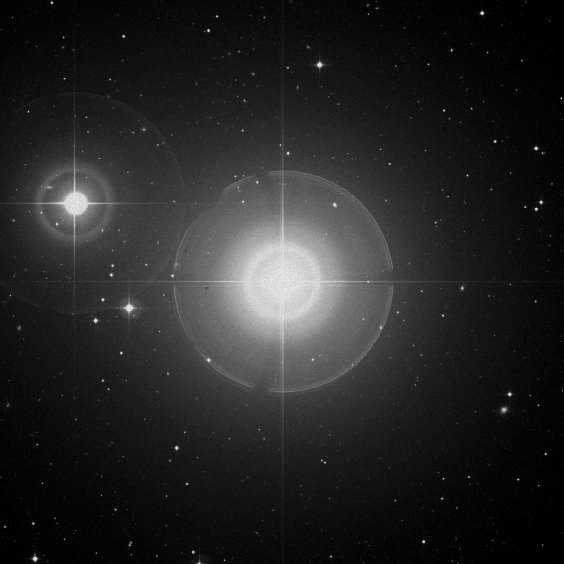


 Back to top...
Back to top...































































